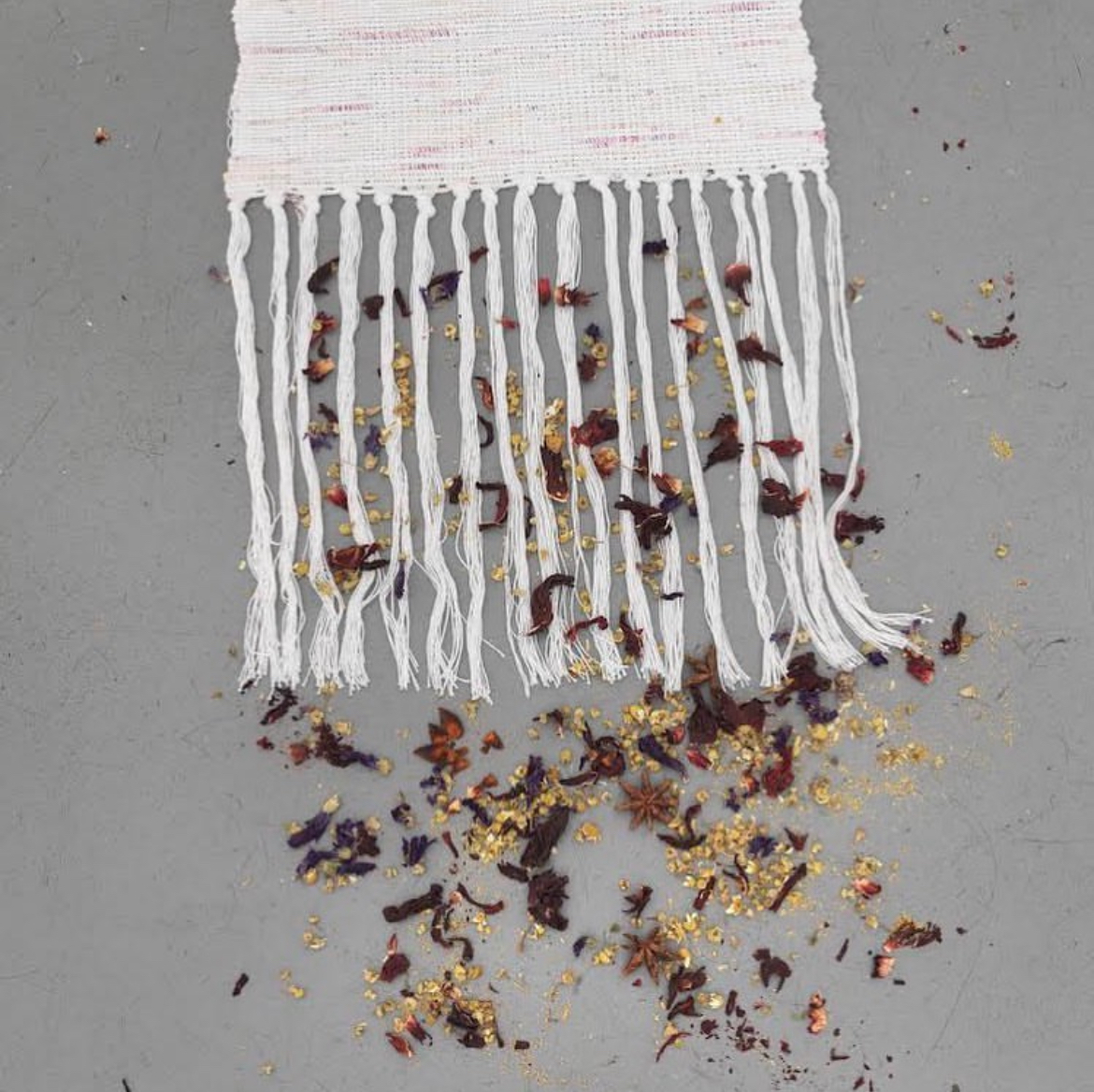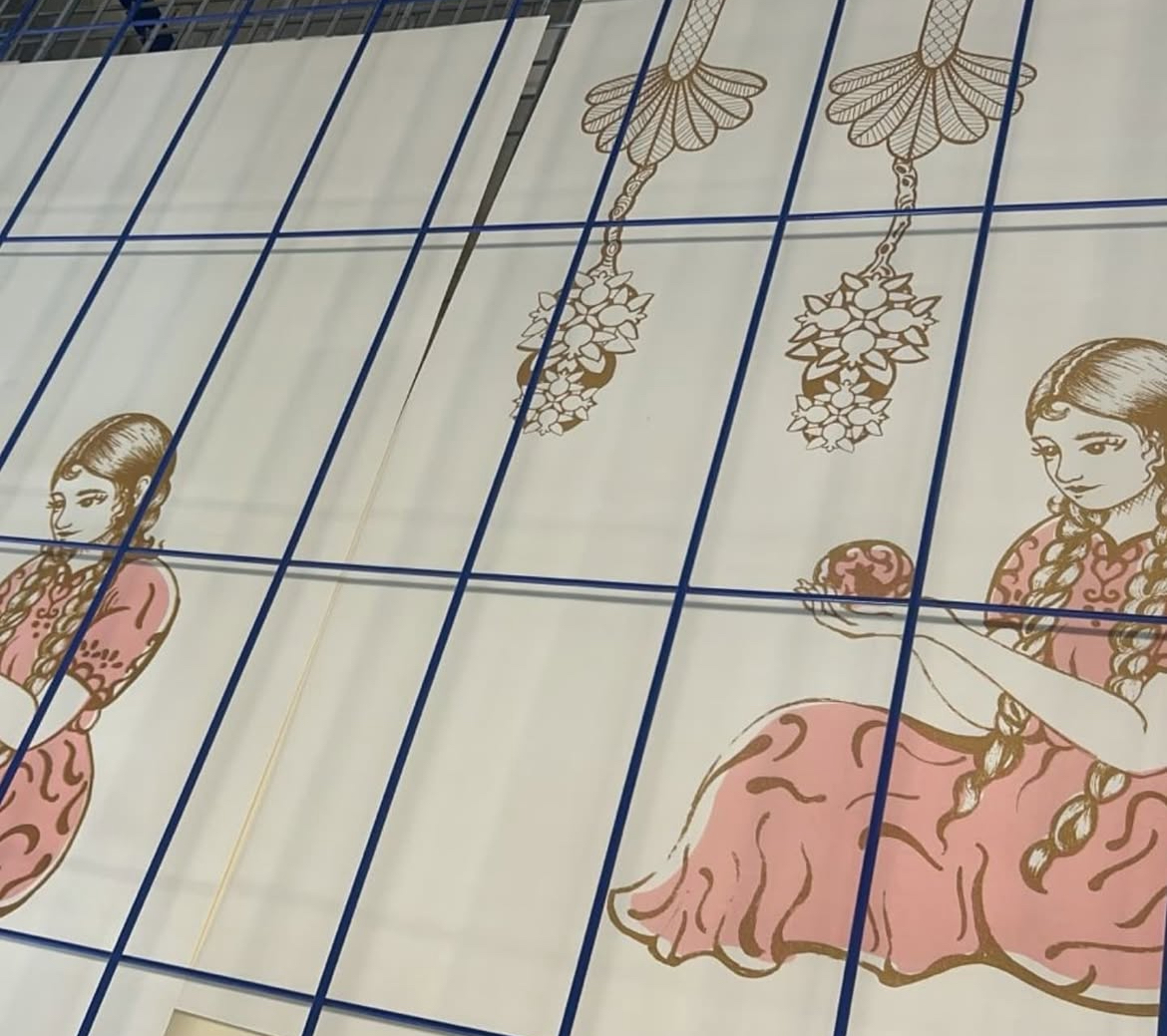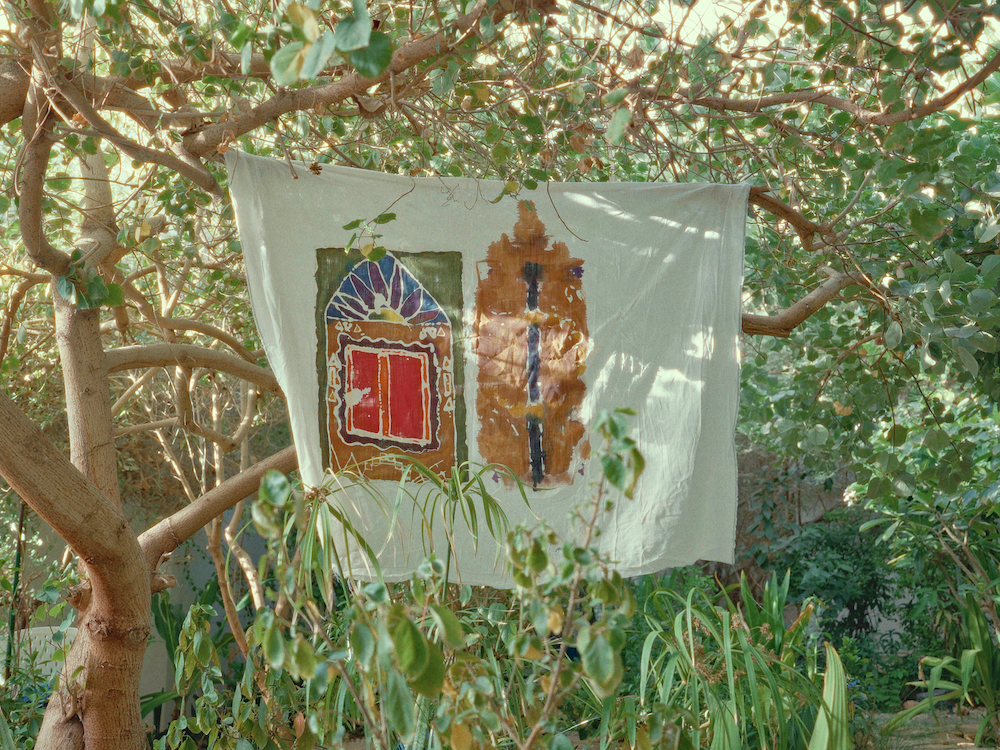RIYADH: Long before synthetic dyes and mass production became commonplace, handicrafts were coveted art forms.
As Saudi Arabia celebrates 2025 as the Year of Handicrafts, the work of artisans throughout history is in the limelight once again.
Artists and artisans across the Kingdom are reviving traditional crafts to reinvent contemporary artforms, including a resurgence in natural dyeing techniques.
Saudi Arabia artist Hana Al-Milli told Arab News: “I believe there is a renewed appreciation and effort to value these practices within the cultural scene.

Saudi textile artist Hana Al-Milli discovered a passion for natural dyeing because it became a way to express heritage and history. (Instagram)
“On one hand, there is a focus on preserving traditional methods in their original form. On the other (hand), contemporary artists, including myself, are reinterpreting these techniques in ways that make them relevant today.
“This dual approach ensures that the craft is both honored and given new life in modern contexts.
“In addition, many cultural initiatives now actively promote the teaching and learning of traditional crafts, instilling pride in Saudis and encouraging us to preserve and celebrate our heritage.”
Al-Milli graduated with a Bachelor of Fine Arts in Textiles and Fiber Arts, where much of her experimentation with materials began, including natural dyes.
“I discovered a passion for natural dyeing because it became a way to express heritage and history — two vital themes in my artistic process.
“It became an essential part of my work when I began researching natural dyes in the Arab world and uncovering their many connections to cultural practices.
“Through this research, I found both a conceptual and personal resonance. The process itself also requires reflection and patience, which mirrors the rhythm of my practice and gives depth to the multiple layers in my work.”
Her dyeing process begins with selecting both the fabric and the dye source, noting that natural dyes imprint differently on various natural fibers.
There are many techniques; some are more spontaneous, such as bundle dyeing, and others more structured, like the traditional Japanese resist-dye method shibori, as well as full immersion.
“There isn’t a single right way to dye; it depends on the desired outcome and the intended use of the textile. Personally, I often use bundle dyeing because it produces a raw and organic quality,” Al-Milli said.
For her, this knowledge about natural dyeing processes includes the responsibility to share these techniques with young, emerging artists.
“I see my practice not only as a personal artistic expression but also as a way to preserve tradition.
“By integrating natural dyes into my work, teaching others, and framing my themes around heritage, I contribute to keeping these techniques alive and evolving in contemporary contexts,” she explained.
While her practice also incorporates techniques such as silk-screen printing, photographic imaging on textiles, and embroidery, natural dyeing holds a special place in her heart.
Artists like Al-Milli prefer it because of its eco-friendly and sustainable nature, while being tied to heritage. The Kingdom is incentivizing other artists to experiment with the technique.
Saudi Arabia artist Zainab Abo Hussain, known for her miniature paintings, has taken on natural dyeing in her most recent artwork produced during Misk Art Institute’s screen-printing residency.
She produced a fabric carpet dyed with henna and saffron, and screen-printed using pigments extracted from pomegranate seeds and peels, as well as saffron, indigo, and other natural materials.

Saudi artist Zainab Abo Hussain, known for her miniature painting works, has taken on natural dyeing in her most recent artwork produced during Misk Art Institute’s screenprinting residency. (Instagram)
The decorative style is inspired by ancient Arabic manuscripts and miniatures, presented in a contemporary form.
“The Kingdom is making sure that it’s coming back, and you can see in AlUla (for example), they have women doing the weaving as well, the baskets and Sadu,” said Suhailah Abdelaziz, a Moroccan-American textile-based artist who was raised in Saudi Arabia.
AlUla’s Madrasat Addeera has put on workshops on the traditional art of textile dyeing, administered by Turquoise Mountain Arabia, where attendees learn to create natural dye from organic ingredients, such as pomegranate and turmeric, found in AlUla’s lush oasis.
Other workshops have also been put on by the National Museum and the Diriyah Biennale Foundation as a part of their programming.
Sadu weaving is an iconic Saudi handicraft, traditionally done by women in the southern regions of the country, where wool or camel hair is dyed naturally and woven into geometric patterns.
Another is the Al-Qatt Al-Asiri architectural style, another tradition originating from the southern regions, where women have long used natural pigments to create brightly colored, geometric wall paintings.
“For Sadu weaving, before they start weaving, they’ll dye the yarn either with Cochineal, which is essentially like a bug. You crush the bug, and then you can extract the dye, as well as Madder and Kermes,” Abdelaziz explained.
“Mostly, they use synthetic dyes now, due to globalization, but back then, they used to use saffron and henna to create these geometric patterns.
“And historically, they would use leaves, roots, petals, or any other natural resources. But mostly all the synthetic dyes right now are imported from India, Kuwait, etc.”
While synthetic dyes are considerably easier to use than organic ones, Abdelaziz prefers the experimental method that resembles adding a new voice and pushing it forward with each piece of fabric.

Suhailah Abdelaziz, a Moroccan American textile-based artist who was raised in Saudi Arabia, uses natural ingredients to create dyes. (Supplied)
Abdelaziz is the founder of Third Culture Child, a clothing concept brand inspired by her multicultural background, aimed at bringing playfulness and a wondrous spirit into clothing.
She uses various techniques including Batik, Indian block printing, and Japanese Shibori, that are reinterpreted through her own lens to make abayas.
By using natural dyes, like the rare ancient indigo pigment, madder root, henna, and logwood extract, her work hopes to keep the connection between the past and the present intact, while inspiring others to do the same.
“I like seeing what I can mix and what comes up. Each piece is slowly made and the dying process — it’s very rigorous, but the clothing carries the imprint of this process.
“Textiles hold the memory transformation, so it goes beyond clothing,” she explained. “It does demand you to remain patient and respect the material, respect the fabric. And it also adds depth and meaning to the finished piece.”

